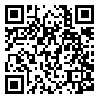BibTeX | RIS | EndNote | Medlars | ProCite | Reference Manager | RefWorks
Send citation to:
URL: http://jdm.tums.ac.ir/article-1-132-en.html
Background and Aim: Impaction of maxillary cuspids is the most common after third molars with 1% to 3% prevalence. Localization of these impacted teeth may affect orthodontic or surgical treatment plan. Therefore, different techniques have been introduced to localize impacted canines. The present study was conducted to compare the accuracy of panoramic, tube shift and panoramic plus palpation in determination of the position of maxillary impacted canine.
Materials and Methods: 47 patients (20 females, 27 males) with the age of more than 12 years (mean age of 25.4 years old) whom referred to Dental School, Tehran University of Medical Sciences, with at least one impacted maxillary canine included. An oral and maxillofacial radiologist localized impacted canine first by using panoramic then tube shift technique blindly. After that, an oral and maxillofacial surgeon localized the canine by panoramic and palpation of the area before surgery. Data obtained from radiologist and surgeon were compared with true location of canine after surgery. Statistical analysis was done using sensitivity and specificity.
Results: Among total 47 impacted maxillary canines, 11 cases (23.4%) showed buccal impactions and 36 cases (76.6%) palatal impactions. Sensitivity (ability of technique to localize palatal impaction) of all of the techniques were same (100%) but specificity (ability of technique to localize buccal impaction) of tube shift (100%) was more than two others (0%).
Conclusion: The tube shift technique was the most accurate technique to localize maxillary unerupted canines compared to the others. Due to the ability of panoramic and panoramic with palpation in prediction of palatal canine impactions and failure of these techniques to predict buccal impactions, both methods are not suitable in localization of impacted maxillary canines and they must be used as adjunctive techniques.
Received: 2009/06/11 | Accepted: 2009/08/21 | Published: 2013/10/1
| Rights and Permissions | |
 |
This work is licensed under a Creative Commons Attribution-NonCommercial 4.0 International License. |




